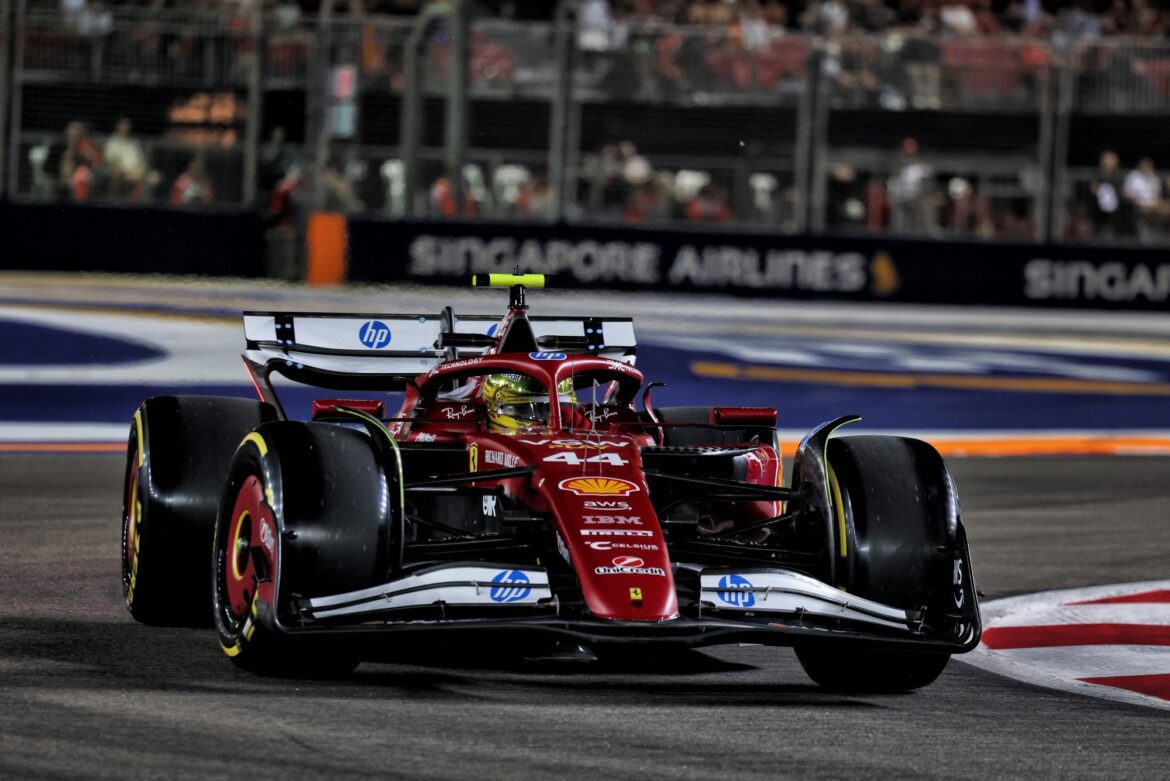Ferrari Faces Challenges After Singapore GP: Insights from Team Principal Frédéric Vasseur
The Ferrari Formula 1 team left the Singapore Grand Prix with more questions than answers, grappling with significant issues that impacted their performance. Team principal Frédéric Vasseur emphasized the urgent need to address these season-long problems, which affected Charles Leclerc’s race at the Marina Bay circuit. During the race, Leclerc was instructed by the team to implement a ‘lift and coast’ strategy, a technique where the driver eases off the throttle before entering a turn and delays braking to conserve the brakes, which were already on the verge of failure.
"If we can’t resolve the issue, there’s no way to compete. It’s essential that we fix this for the next race," Vasseur stated, hinting at the importance of improving the car’s performance. The upcoming race would present a different set of challenges, he added, indicating a need for immediate solutions.
Recurring Brake Issues
This situation is not new for the Maranello-based team. Leclerc had previously been instructed to adopt a similar ‘lift and coast’ approach in other races throughout the 2025 season, indicating a potential structural problem with the car. On circuits that place heavy demands on the brakes, like Singapore, this limitation becomes even more pronounced and can compromise the entire race strategy.
Leclerc finished the race in sixth place, while Lewis Hamilton, who also faced braking difficulties during the race, including a notable incident with Fernando Alonso, ended up in eighth. When asked if Ferrari had the pace to compete with the front runners before the braking issues arose, Vasseur chose to refrain from making definitive statements.
"Honestly, I don’t know. I believe we had some laps where we were racing with them, but soon after we had to ask Charles to do lift and coast. It’s not merely about losing a bit at the end of the straight. You also have to find the right braking point and balance the front and rear, which changes the car’s dynamics repeatedly," Vasseur explained.
Analyzing the Performance
The challenges faced by the Ferrari team during the Singapore GP highlight deeper issues that have been plaguing the team throughout the season. The strategy of ‘lift and coast’ is typically utilized to extend tire life or manage fuel consumption, but when it’s used as a necessity to protect braking systems, it exposes a critical flaw in the car’s design or setup.
Leclerc’s race was a telling example of how such issues can derail competitive efforts. Despite Ferrari’s considerable investment in research and development, the team has struggled to achieve the desired performance levels, particularly in high-pressure environments like Singapore. The inability to compete effectively with rivals not only dampens the team’s morale but also raises questions about their engineering choices and overall strategy.
Understanding the Technical Challenges
As the team reflects on the performance, it’s essential to understand the technical challenges surrounding the car. Brake performance is crucial in Formula 1, especially on street circuits where tight corners and heavy braking zones are prevalent. The demands placed on the braking system can lead to overheating and eventual failure if not adequately managed.
Ferrari’s braking system must be robust enough to withstand the stresses of racing while providing the driver with the confidence needed to push the car to its limits. The fact that Leclerc was forced to conserve brakes during the race indicates that there may be underlying issues with the car’s setup or the components used in the braking system.
The Road Ahead for Ferrari
Moving forward, Vasseur and the Ferrari team must prioritize diagnosing and rectifying the braking issues that have hindered their performance. This will require not only a thorough analysis of the current car setup but also potentially re-evaluating the components used in their braking system. Collaboration with engineers and strategists will be critical to ensure that Ferrari can return to competitive form.
The upcoming races will serve as a litmus test for Ferrari’s ability to adapt and improve. If the team can successfully resolve these issues, they may regain the necessary performance to challenge the leaders consistently. However, continued struggles with braking will likely lead to further complications in race strategy and driver confidence.
Conclusion
As Ferrari navigates the aftermath of the Singapore Grand Prix, the focus on resolving existing problems is paramount. With the team’s commitment to improvement and a clear understanding of the challenges ahead, there is hope for a turnaround in performance. The ability to adapt and evolve will be key as they strive to reclaim their position at the forefront of Formula 1 racing.
